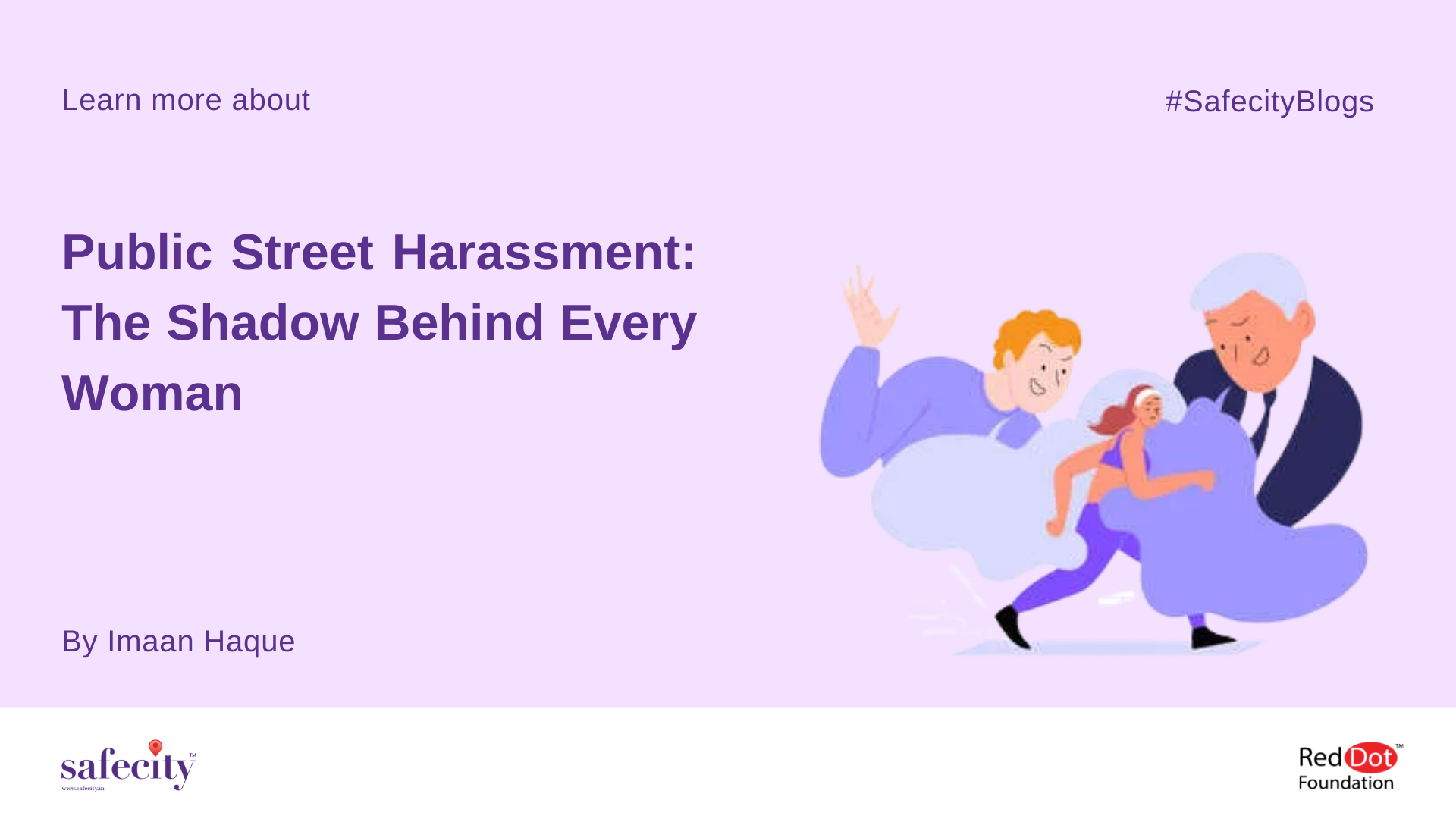Public Street Harassment: The Shadow Behind Every Woman

By Imaan Haque
An inevitable facet of traversing the world as a woman is the ceaseless harassment levied on us in public. In India, a woman is sexually harassed every 12 minutes. Street harassment comes in many forms: eve-teasing (including making passes, obscene gestures, whistling, leering), molestation, and physical and verbal harassment. Nearly 8 out of 10 women are harassed in public, most often on their daily commute via public transport such as buses, trains, and autos. According to a survey conducted in 2016, nearly 40% of women who participated said they have been sexually harassed in a public place, with the bulk of the crimes having occurred in the daytime.
While the statistics paint a grim picture, the reality is even darker. Several cases of public harassment and molestation go unreported, as women often choose to ignore such acts due to fear of escalation, fallback, and the shame associated with being violated in such ways. Minimal legal recourse and the difficulty of catching a perpetrator in the act also deter reports and consequent legal follow-up, not to mention the hindrance of actually reporting sexual harassment. Studies looking into this have shown that stranger harassment is so prevalent that it has gradually become an inescapable part of life as a woman. As a result of this, most women begin to regard public harassment as inconsequential owing to its regular recurrence and omnipresence.
A lot of times, bystanders will simply overlook any incidents happening in their vicinity, especially in crowded spaces like public transport vehicles. While it may not always be possible to confront the harasser directly, there are a number of ways bystanders can step in and diffuse the situation.
Diffusing the situation subtly, distracting the harasser or intervening by striking up a conversation with the person being targeted can, more often than not, help immensely. As per the bystander effect, we know that people tend to mimic cues when in a crowd. Therefore, if one person intervenes, others may get the incentive to speak up and handle the harasser appropriately.
However, perhaps the most insidious effect of street harassment is the perpetual fear it instils in women. This fear of being violated at any point when you are simply trying to go about your day-to-day activities can be paralysing and overwhelming. This study shows that 33% of women surveyed stopped going out in public and 17% said they quit their jobs rather than face harassment in public places. This fear acts as a powerful tool in limiting women’s lives. In her book, CHUP, author Deepa Narayan writes about how women unknowingly experience symptoms of post-traumatic stress disorder (PTSD) due to this unrelenting and changeless state of fear. A large part of the mentality that facilitates and perpetuates street harassment stems from wanting to discourage women from entering public spaces and equally sharing them with men, as opposed to remaining in the ‘protection’ of their homes. Often, this is proven by the reactions of women narrating their incidents of harassment – responses range from outright victim-blaming to just plain dismissal.
As a society, we have to take a step back and evaluate how we have normalised such an atrocious practice to the extent that it has now become synonymous with daily life. Why is this pervasive practice of violating women’s personal space so acceptable and entrenched as a fact of life? The most important change we have to make is to amend our attitudes towards sexual harassment and violence against women. We cannot possibly hope to be rid of these social ills unless we start at the root of the problem. The onus of retaliation against the perpetrator is not on the victim, but instead on the bystanders. Awareness is the biggest tool we have in our fight against gender-based crimes.
